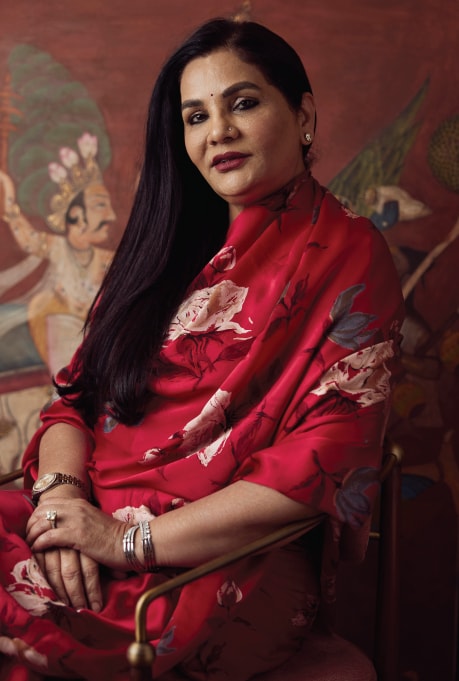Delving into India’s multifaceted history of jewellery making with
a one-of-a-kind museum in the Pink City.
Decades after India’s liberation from British rule, the search for the scattered pieces lost under colonialism still seems inexhaustible. Today, a grand indo-Islamic structure – the Museum of Meenakari Heritage (MoMH) – in the heart of Jaipur celebrates the legacy of Indian jewellery making. Designed by Studio Lotus and Siddhartha Das Studio, it is privately funded by renowned jeweller Sunita Shekhawat. Spanning across 2,200sq ft of space, MoMH showcases a curation by jewellery historian and scholar Dr. Usha R. Balakrishnan. Over a time of four years, Balakrishnan’s team collated over three hundred references from the world’s most coveted collections at the British Museum, Sotheby’s, The Victoria and Albert Museum, Aga Khan Museum, The Al-Thani Collection and more. These are the lost pieces of history – jewels that were once snatched away from the very place they were made in.
Shekhawat’s museum sheds light on the art of enamelling or meenakari – a craft that was brought to India in the 15th century by the Portuguese. It was further patronised by the Mughal Sultanate, who took a special interest in its meticulous workmanship and use of exquisite colours. “The idea of the museum came to me seven years back, and it took more than four years to complete. But I have been living and breathing enamelling for the past twenty-five years”, says the Modern Meenakar – as she is fondly known. “Currently, the museum exhibits 120 immaculate reproductions of enamelled artefacts by the Shekhawat atelier, along with the imagery acquired by Balakrishnan’s team from premier museums globally.” Erstwhile India was a hub for various crafts but Shekhawat’s continual pull towards meenakari is fascinating. However, it is the imperfection of the craft that captures Shekhawat above all. “We want our clients to experience the beauty of inconsistency in handmade artefacts – the factor that makes each piece unique.”
Basking in the glory of her twenty-five years of love story with enamelling, the jeweller made sure each piece at the museum represented the hues of ancient India. This includes a splendid shade of red, known as koon-e-kabouter ( meaning pigeon blood) in Mughal India. The art of playing with colours is not new to Shekhawat. Her career has helped her understand the hues of the past to create ones of the present. “With time, we have developed more than 360 shades used in our atelier’s exquisite creations”, she adds.
The Shekhawat haveli is a travel through time, offering an immersive retail journey to its audience. On introducing lesser-known forms of the craft to the country, she shares, “we are proud to introduce a unique French enamelling technique called the Plique-à-jour, which translates to – letting in daylight. In this technique, the enamelling is done in cavities without a base, making it crystal clear, which allows light to pass through each nook. It took us three years to master the craft but ultimately, we were successful in understanding its nuances.”

Architecture of Allure
Shekhawat’s Jodhpuri roots come to life through the hand-carved structure of the Haveli. The architecture reflects Indo-Saracenic influences – a 19th century style amalgamating Indian, Western and Islamic elements. The facade captures the beauty of an era gone by with jharokas accentuated with warm lighting. At the same time, it is also imbued with modern elegance, giving it a touch of Neoclassical style. Boasting Jodhpur’s traditional red stone, the architecture seamlessly blends into the Pink City’s colour palette. “The Museum of Meenakari Heritage is a homage to Jaipur, the city which has been instrumental in my journey”, shares the jeweller.
Ever since opening her very first boutique back in 1999, Shekhawat has created an unparalleled niche for her brand on the basis of pure admiration for craftsmanship. Today, her clientele consists of India’s royalty and few of the most influential families.
Over the past two decades, the brand has not only garnered local craftsmanship but has also educated its patrons about the country’s historic past. After operating through three successful stores in Jaipur and Delhi, Shekhawat’s MoMH emerges as a paragon of experiential shopping in India.